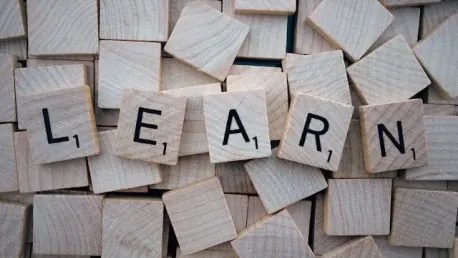Artificial Intelligence (AI) is revolutionizing the modern world, with advancements such as generative AI tools like ChatGPT and Midjourney capturing the attention of tech enthusiasts. As AI development progresses, reinforcement learning (RL), a subset of AI, is also experiencing significant breakthroughs across various industries, including aviation. This article discusses the future of reinforcement learning in the aviation industry, highlighting its potential applications in enhancing flight operations, revolutionizing maintenance, improving customer experience, training pilots and crew, and addressing environmental challenges.
Enhancing Flight Operations
Optimizing Flight Routes
Flight operations are crucial to aviation, and reinforcement learning can enhance multiple aspects of this process. RL algorithms can create more efficient flight routes, reducing fuel usage and delays, contributing to the goal of net zero carbon emissions and promoting sustainable aviation. Furthermore, RL can improve air traffic management by analyzing real-time data to predict congestion and adjust routes for both domestic and international flights. This reduces delays and increases efficiency. As these algorithms learn from extensive data sets, they become adept at anticipating and mitigating factors that could otherwise disrupt schedules, such as adverse weather conditions or sudden changes in airspace restrictions.
By implementing RL-driven optimization tools, airlines can significantly reduce operational costs and decrease their environmental impact. More efficient routing reduces the amount of fuel burned during flights, leading to lower carbon emissions, which is a critical component in the industry’s pursuit of sustainability. Additionally, optimizing flight paths can alleviate congestion in busy airspace zones, potentially reducing delays, which in turn enhances passenger satisfaction. The continuous learning capability of RL ensures that these algorithms remain effective even as traffic patterns and environmental conditions evolve over time.
Advanced Autopilot Systems
Another promising area for RL in aviation is autopilot systems. Currently, autopilots follow pre-programmed rules, but with reinforcement learning, they can handle unexpected situations, increasing flight safety and adaptability. By learning from various scenarios, RL-based autopilots can make real-time decisions, enhancing the overall safety and efficiency of flights. This adaptability is particularly valuable in dynamic and unpredictable environments where traditional autopilot systems may struggle to respond effectively to sudden changes or emergencies.
The integration of RL into autopilot systems marks a significant shift from static programming to dynamic decision-making. As autopilots learn from an expanding dataset of flight situations, they improve their ability to manage complex scenarios, such as sudden turbulence, unexpected mechanical issues, or unplanned airspace changes. This evolution enhances both the safety and reliability of flights, reassuring passengers and allowing human pilots to focus on more strategic aspects of flight management. Ultimately, the goal is to augment, rather than replace, human decision-making, creating a synergistic relationship between pilot expertise and machine learning capabilities.
Revolutionizing Maintenance
Predictive Maintenance
Aircraft maintenance is vital for safety and operational efficiency, and reinforcement learning has the potential to transform this sector. Using predictive maintenance driven by RL, it is possible to detect potential issues before they escalate into significant problems. By analyzing sensor data patterns, RL models can forecast equipment malfunctions. This proactive approach minimizes downtime and ensures prompt and efficient repairs, reducing expenses for airlines and resulting in fewer interruptions for passengers. The transition from reactive to predictive maintenance signifies a major advancement in maintaining operational readiness and enhancing the longevity of aircraft components.
The ability of RL to continuously learn and adapt based on real-time data inputs means that maintenance schedules can be fine-tuned to the specific wear and tear patterns of individual aircraft. This customization leads to more accurate predictions of when parts will need repair or replacement, preventing unexpected breakdowns mid-flight. By catching and addressing issues before they become critical, airlines can avoid the costly delays and disruptions associated with unscheduled maintenance. Furthermore, this approach supports sustainable practices by extending the lifespan of components and reducing the need for emergency part replacements, which often carry a higher environmental and financial cost.
Efficient Repair Processes
Reinforcement learning can also streamline the repair processes by optimizing the allocation of resources and scheduling of maintenance tasks. By learning from historical data, RL algorithms can predict the most efficient ways to conduct repairs, ensuring that aircraft are back in service as quickly as possible. This not only enhances operational efficiency but also improves the overall reliability of the fleet. By predicting the optimal distribution of maintenance crews and resources, reinforcement learning can minimize the time aircraft spend out of service, hence maximizing the overall fleet availability.
Improved repair scheduling means that maintenance activities can be conducted during off-peak times or planned downtimes, reducing the impact on flight schedules. By learning the patterns that lead to the swiftest and most effective repairs, RL ensures that maintenance teams can prioritize critical tasks and have the right tools and parts available at the right times. This proactive approach decreases turnaround time, ensuring that aircraft can be fully operational and ready for service with minimal disruption. Additionally, RL can assist in identifying and sourcing necessary parts more efficiently, further streamlining the maintenance process by reducing delays caused by waiting for parts to arrive.
Improving Customer Experience
Optimizing Ticket Pricing
Passenger experience is fundamental to the aviation sector, and reinforcement learning can tailor services to improve overall satisfaction. RL algorithms can optimize ticket pricing by examining factors such as demand, seasonal trends, and customer preferences, ensuring competitive pricing while maximizing revenue. This dynamic pricing strategy can help airlines better manage their revenue streams and offer more attractive prices to passengers. By continuously learning from booking patterns and market conditions, RL-driven pricing models can react swiftly to changes, keeping airlines competitive and passengers satisfied with fair pricing.
The flexibility of RL in adapting to fluctuations in demand allows airlines to offer promotional fares during low-demand periods and to adjust prices more effectively during peak travel times. This balance ensures higher seat occupancy rates and optimizes revenue without compromising customer satisfaction. Furthermore, these pricing models can consider a range of variables, including economic indicators, competitor pricing, and even weather forecasts, to set prices dynamically. This comprehensive approach to pricing helps passengers find competitive fares, fostering loyalty and repeat business, while simultaneously maximizing the financial efficiency of flights for airlines.
Personalized In-Flight Services
Additionally, deep reinforcement learning can enhance in-flight services by providing customized recommendations for entertainment options and meal selections based on passenger preferences, contributing to a more enjoyable travel experience. By analyzing passenger data, RL systems can offer personalized services that cater to individual needs, making the journey more comfortable and enjoyable. This level of personalization can transform the in-flight experience, ensuring passengers have access to content and services that align with their preferences, thus increasing their overall satisfaction.
Passengers are likely to appreciate the tailored approach, which can include personalized greetings, seat preferences, and even suggestions based on past travel behavior. For instance, frequent travelers could receive curated entertainment options or meal choices that reflect their previous selections. This customization extends to in-flight amenities, where RL systems can predict additional passenger needs and offer relevant products or services, enhancing comfort and convenience. As airlines leverage RL to deepen their understanding of passenger preferences, they can create more engaging and memorable experiences, setting themselves apart in a highly competitive industry. This focus on personalization not only improves customer satisfaction but also builds brand loyalty.
Training Pilots and Crew
Realistic Simulators
Training is crucial in aviation, and reinforcement learning can facilitate the development of realistic simulators for pilot training. These simulators can emulate complex scenarios, including emergency situations, allowing pilots to acquire the skills necessary to manage difficult scenarios. RL-based simulators can adapt to the unique pace of each learner, ensuring comprehensive training and fostering self-assurance among pilots and crew. The adaptability and nuance of these RL-driven simulators ensure that pilots receive training that is both thorough and reflective of real-world flying conditions.
The continuous evolution of training scenarios provided by RL allows for a wider range of situations to be covered, including rare and extreme events that pilots might not frequently encounter in regular training. This ensures that pilots are better prepared for any eventuality, boosting their confidence and decision-making capabilities. Additionally, the ability of these simulators to learn and adapt means that the training programs can be tailored to the specific needs and progress of individual pilots, offering a more personalized and effective learning experience. This type of advanced training system represents a significant step forward in equipping pilots with the skills required to maintain the highest safety standards in aviation.
Continuous Learning and Adaptation
Reinforcement learning can also support continuous learning and adaptation for pilots and crew. By providing ongoing training and feedback, RL systems can help aviation professionals stay updated with the latest procedures and technologies. This continuous learning approach ensures that pilots and crew are always prepared to handle new challenges and maintain high standards of safety and efficiency. The dynamic nature of RL allows training programs to evolve alongside industry advancements, ensuring that aviation professionals can adapt to new regulatory requirements and technological innovations seamlessly.
The implementation of RL-based continuous training platforms can also facilitate the identification of skills gaps and provide targeted interventions to address them. This proactive approach ensures that pilots and crew members receive the support they need to excel in their roles, fostering a culture of continuous improvement and professional development. By integrating RL into training programs, airlines can ensure that their staff are not only competent but also adaptive and forward-thinking, able to respond to new challenges with confidence and expertise. This commitment to ongoing learning is essential for maintaining the rigorous standards of safety and excellence that define the aviation industry.
Addressing Environmental Challenges
Enhancing Fuel Efficiency
Sustainability is a significant priority in the aviation sector, and reinforcement learning can help reduce the industry’s environmental footprint. RL systems can enhance fuel efficiency and reduce emissions. By optimizing flight paths and operational procedures, RL can contribute to more sustainable aviation practices, helping the industry meet its environmental goals. The ability to continuously learn from data allows RL systems to refine and improve fuel-saving strategies, making incremental gains that add up to significant environmental benefits over time.
Fuel efficiency improvements through RL can extend to various aspects of flight operations, including take-off, cruising, and landing procedures. By analyzing vast datasets on factors such as aircraft performance, weather conditions, and air traffic, RL models can recommend the most fuel-efficient practices for each phase of a flight. This holistic approach ensures that fuel savings are maximized throughout the journey, reducing overall carbon emissions. Moreover, the implementation of RL-driven fuel optimization strategies can lead to cost savings for airlines, which can then be reinvested into further sustainability initiatives.
Reducing Noise Pollution
Furthermore, improvements in flight scheduling through RL can reduce noise pollution around airports, balancing operational efficiency with environmental concerns. By analyzing data on noise levels and flight patterns, RL systems can develop strategies to minimize the impact of aviation on surrounding communities, contributing to a more sustainable future for the aviation industry. Optimizing takeoff and landing schedules to avoid residential areas during sensitive times can significantly reduce noise disturbances, enhancing the quality of life for people living near airports.
The ability of RL to integrate multiple variables into its decision-making process allows for more nuanced and effective noise reduction strategies. For example, RL models can account for factors such as local noise regulations, population density around flight paths, and the acoustic profiles of different aircraft. This comprehensive approach ensures that noise mitigation efforts are tailored to the specific characteristics of each airport and its surrounding community. By reducing noise pollution, airlines can improve their relationships with local communities and regulatory bodies, fostering a more harmonious and sustainable coexistence.
Reinforcement learning in the aviation industry promises to be revolutionary. By optimizing operations and enhancing safety, its applications are vast and hold the potential to significantly impact the sector. As technology advances, it is essential to explore how reinforcement learning will shape the future of aviation in the digital age.
Conclusion
Artificial Intelligence (AI) is transforming the modern world, with innovations like generative AI tools such as ChatGPT and Midjourney capturing the interest of tech enthusiasts. As AI advances, a specialized area known as reinforcement learning (RL) is also making notable strides across a range of industries. One of the fields experiencing the impact of RL is aviation. The future of reinforcement learning in the aviation industry holds significant promise, with potential applications aimed at enhancing various aspects of aviation. These include improving flight operations, revolutionizing maintenance protocols, boosting customer experience, and advancing pilot and crew training initiatives. Moreover, RL offers innovative solutions to tackle environmental challenges within the industry. This article delves into these exciting prospects, examining how RL could reshape the landscape of aviation by providing sophisticated, data-driven approaches to traditional processes, ultimately driving efficiency, safety, and sustainability.









